Association Rules & Apriori Algorithm
Association Rule Mining
- Given a set of transactions, find rules that will predict the occurrence of an item based on the occurrences of other items in the transaction

Definition: Frequent Itemset
- Itemset
- A collection of one or more items
- Example:
{Milk, Bread, Diaper}
- Example:
- k-itemset
- An itemset that contains k items
- A collection of one or more items
- Support count (σ)
- Frequency of occurrence of an itemset
- E.g.
σ({Milk, Break, Diaper}) = 2
- Support
- Fraction of transactions that contain an itemset
- E.g.
s({Milk, Bread, Diaper}) = 2/5
- Frequent Itemset
- An itemset whose support is greater than or equal to a minsup threshold
- Association Rule
- An implication expression of the form
X->Y, where X and Y are itemsets - Example
{Milk, Diaper} -> {Beer}
- An implication expression of the form
- Rule Evaluation Metrics
- Support (s)
- Fraction of transactions that contain both X and Y
- Confidence (c)
- Measures how often items in Y appear in transactions that contain X
- Example
- Support (s)
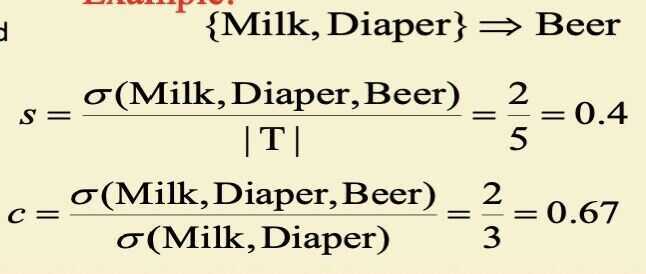
Association Rule Mining Task
- Given a set of transactions T, the goal of association rule mining is to find all rules having
- support >= minsup threshold
- confidence >= minconf threshold
- Brute-force approach
- List all possible association rules
- Compute the support and confindence for each rule
- Prune rules that fail the minsup and minconf thresholds
- Computationally prohibitive
Mining Association Rules
-
Two-step approach
-
Frequent Itemset Generation
- Generate all itemsets whose support >= minsup
-
Rule Generation
- Generate high confidence rules from each frequent itemset, where each rule is a binary partitioning of a frequent itemset
-
-
Frequent itemset generation is still computationally expresive

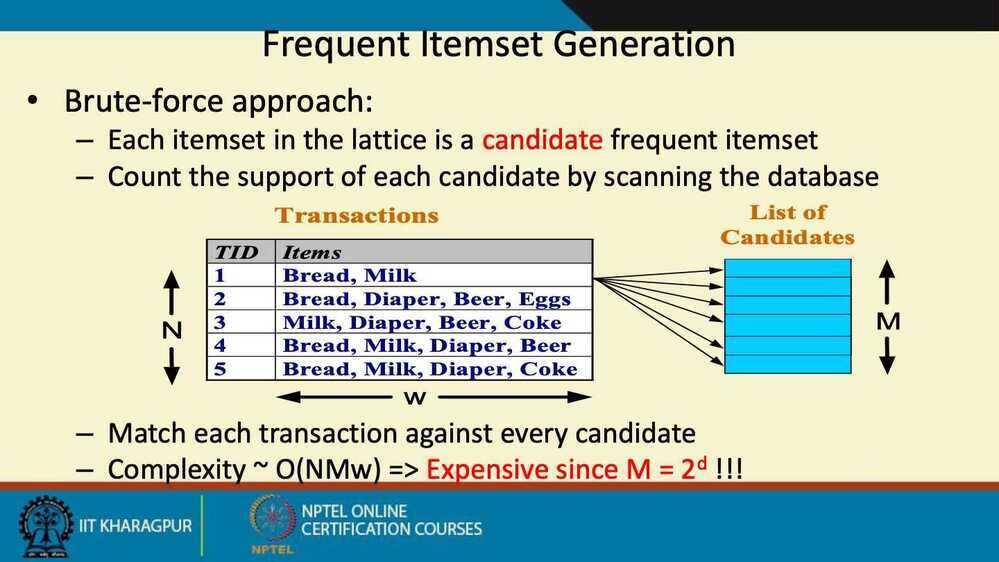
Frequent Itemset Generation Strategies
- Reduce the number of candidates (M)
- Complete search: M = 2^d^
- Use pruning techniques to reduce M
- Reduce the number of transactions (N)
- Reduce size of N as the size of itemset increases
- Used by DHP and vertical-based mining algorithms
- Reduce the number of comparisons (NM)
- Use efficient data structures to store the candidates or transactions
- No need to match every candidate against every transaction
DHP - Direct Hashing and Pruning
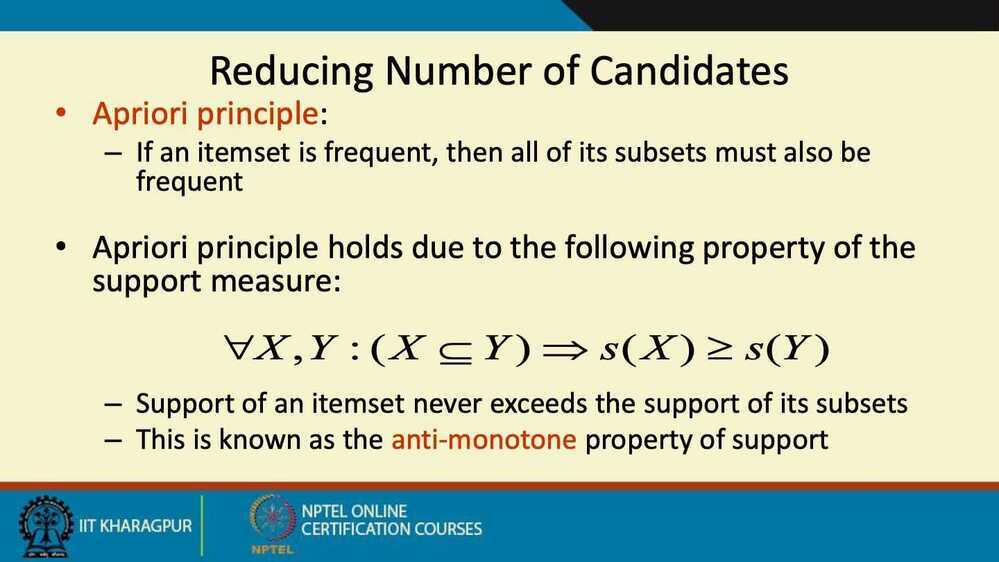
Example - If bat + ball are not frequent, then we can say that bat + ball + gloves is also not frequent.
Other way around of Apriori principle - if an itemset is not frequent, then all its superset are also not frequent.
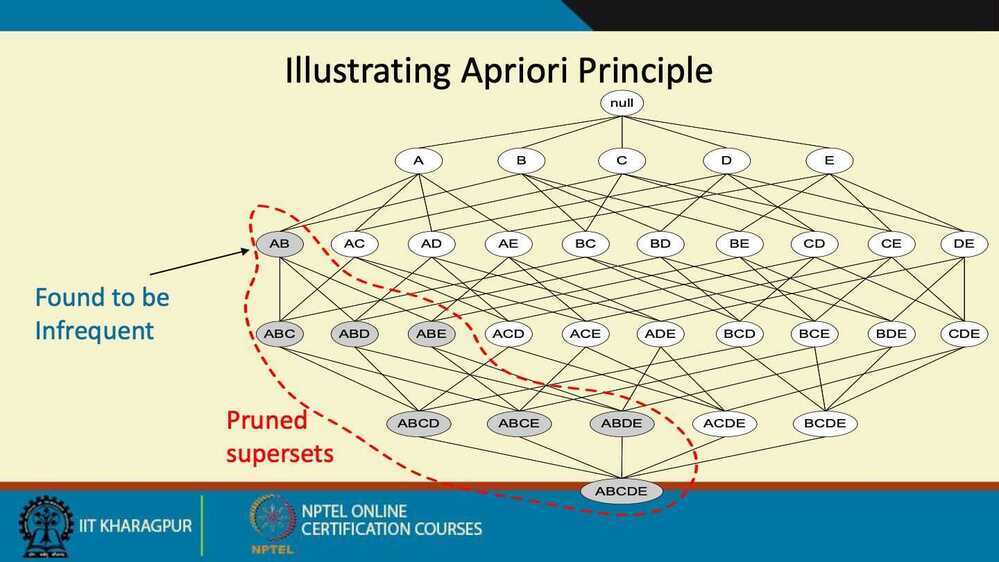
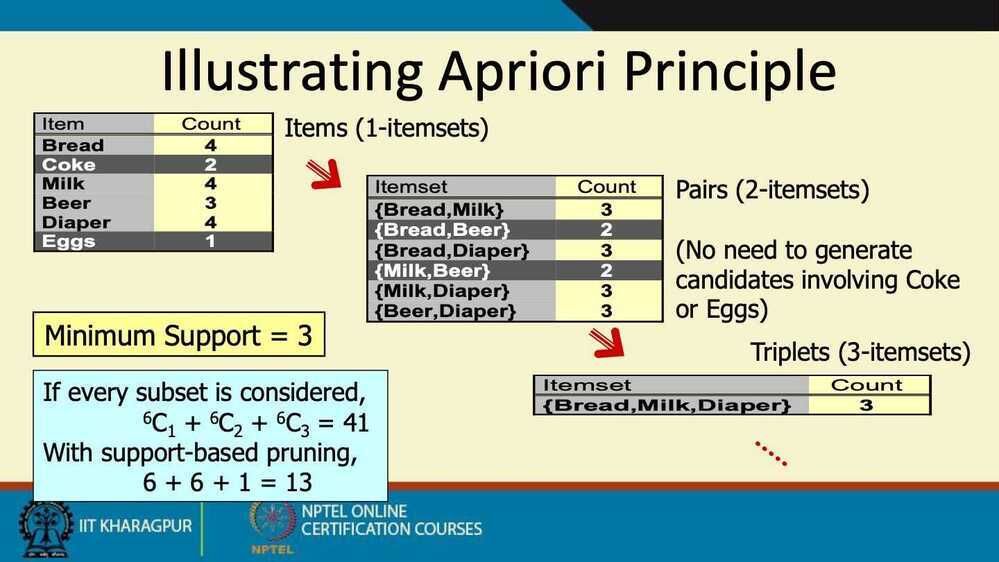
Apriori Algorithm
- Let k = 1
- Generate frequent itemsets of length 1
- Repeat until no new frequent itemsets are identified
- Generate length (k+1) candidate itemsets from length k frequent itemsets
- Prune candidate itemsets containing subsets of length k that are infrequent
- Count the support of each candidate by scanning the DB
- Eliminate candidates that are infrequent, leaving only those that are frequent
Factors affecting complexity
- Choice of minimum support threshold
- Lowering support threshold results in more frequent itemsets
- this may increase number of candidates and max length of frequent itemsets
- Dimensionality (number of items) of the data set
- more space is needed to store support count of each item
- if number of frequent items also increases, both computation and I/O costs may also increase
- Size of database
- Apriori makes multiple passes, run time of algorithm increase with number of transactions
- Average transaction width
- This may increase max length of frequent itemsets and traverals of hash tree (number of subsets in a transaction increases with its width)